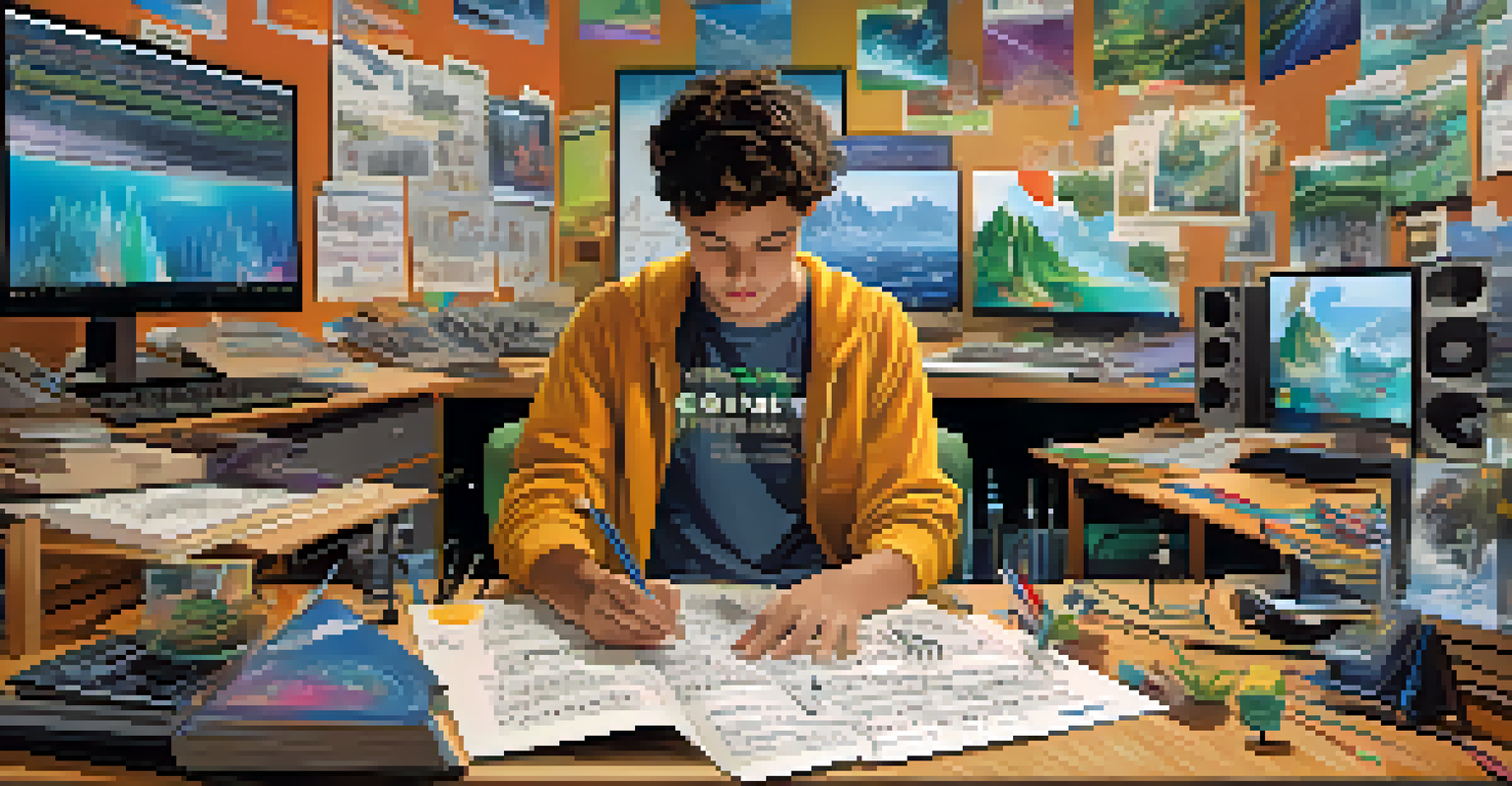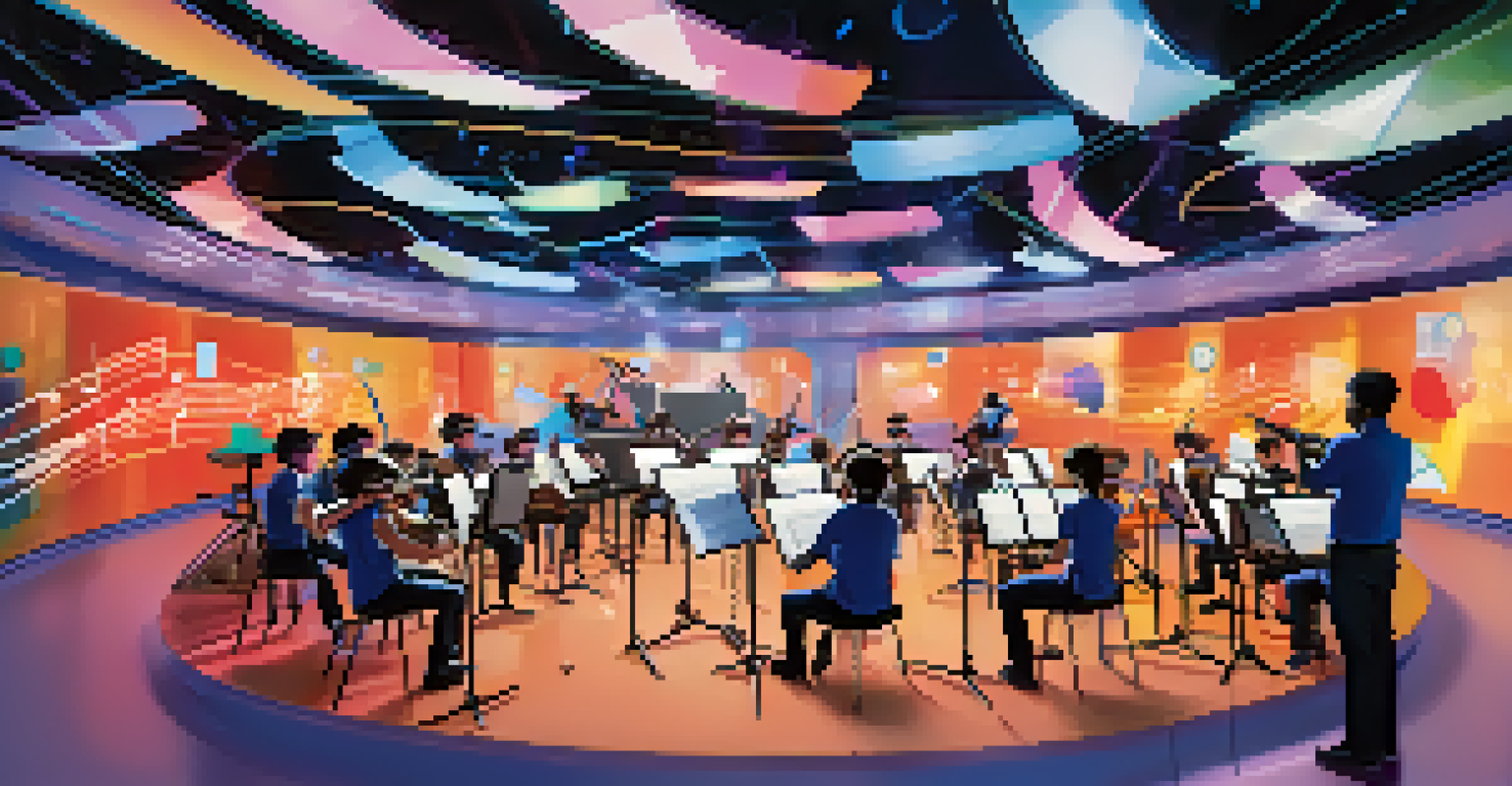Integrating Music Software in the Classroom for Enhanced Learning

Why Integrate Music Software in Education?
Integrating music software into the classroom can transform how students learn. It engages diverse learning styles, making lessons more interactive and enjoyable. For instance, students who struggle with traditional methods might find rhythm and melody easier to grasp.
Music can change the world because it can change people.
Moreover, music has been shown to enhance memory retention. By incorporating a song or rhythm into a lesson, students are more likely to remember the information. This approach not only makes learning fun but also reinforces educational content through auditory cues.
Lastly, using music software supports creativity. It encourages students to express themselves and think outside the box, which is essential for developing critical thinking skills. In a world that increasingly values innovation, fostering creativity through music can be a game changer.
Types of Music Software for Classroom Use
There are various types of music software available, each serving different educational purposes. For instance, digital audio workstations (DAWs) like GarageBand or Ableton Live allow students to create and manipulate music, providing hands-on experience with sound design and production.

Additionally, software like Noteflight or MuseScore enables students to compose and notate music digitally. This can be particularly beneficial for music theory lessons, allowing students to visualize their compositions and understand musical concepts better.
Boost Learning with Music Software
Integrating music software enhances student engagement and memory retention by making lessons interactive and enjoyable.
Finally, interactive apps like Yousician or SmartMusic offer real-time feedback on performance. These tools can motivate students to practice more, as they receive instant assessment and encouragement, making music education more accessible and enjoyable.
Enhancing Engagement Through Interactive Learning
Music software can significantly boost student engagement by making learning interactive. Instead of passively listening to lectures, students can actively participate in creating music that relates to their subjects. For example, students could create a song about historical events to reinforce their understanding.
The beautiful thing about learning is that no one can take it away from you.
Moreover, collaborative projects using music software can foster teamwork. When students work together to produce a piece of music, they learn to communicate and share ideas. This collaborative spirit mirrors real-world scenarios where teamwork is vital for success.
Ultimately, the enjoyment of making music can also lead to increased motivation. When students are excited about their lessons, they are more likely to invest time and effort into their education, leading to enhanced learning outcomes.
Developing Technical Skills with Music Software
Using music software in the classroom not only enhances learning but also develops essential technical skills. Students become familiar with navigating software interfaces, which is a valuable skill in today's digital age. This experience can be particularly beneficial for those interested in pursuing careers in music technology or related fields.
Additionally, working with music software teaches students about audio editing and production techniques. These skills can translate to various industries beyond music, including film, advertising, and game design. Understanding how to manipulate audio is a growing asset in many career paths.
Develop Essential Technical Skills
Using music software helps students acquire valuable technical skills that are applicable across various careers beyond music.
Finally, learning to troubleshoot technical issues with software promotes problem-solving skills. Students learn to think critically and work through challenges, preparing them for real-world situations where adaptability is key.
Incorporating Music Software into Different Subjects
Music software can be integrated across various subjects, enhancing interdisciplinary learning. For example, in language arts, students might write lyrics for a song that reflects themes in a novel they are studying. This not only deepens their understanding but also makes the literature more relatable.
In science, students could create soundtracks that illustrate different ecosystems or the water cycle. By combining music with science, students can develop a more holistic understanding of the material, leading to better retention and engagement.
Even math can benefit from music integration. Students can explore patterns and rhythms in music that relate to mathematical concepts, such as fractions or ratios. This creative approach helps demystify math and shows its real-world applications.
Overcoming Challenges in Music Software Integration
While integrating music software into the classroom offers numerous benefits, there can be challenges. One common hurdle is the learning curve associated with new technology. Teachers and students may need time to become comfortable with the software, which can initially slow down the learning process.
Additionally, access to technology can be an issue, particularly in underfunded schools. Ensuring that all students have access to the necessary hardware and software is essential for effective integration. Schools might consider partnerships with local music organizations or grants to secure resources.
Interdisciplinary Applications of Music
Music software can be integrated across subjects like language arts, science, and math, enriching the educational experience and fostering deeper understanding.
Lastly, it's crucial to align the use of music software with educational standards. Teachers should ensure that their musical projects meet curriculum goals and learning objectives. By doing so, they can maximize the impact of music software on student learning.
Future Trends in Music Education Technology
As technology continues to evolve, so will the tools available for music education. Emerging trends include artificial intelligence (AI) in music composition and personalized learning experiences through adaptive software. These advancements promise to make music education even more engaging and tailored to individual student needs.
In addition, virtual and augmented reality (VR and AR) are beginning to find their way into music education. Imagine students being able to step into a virtual studio or conducting an orchestra in an immersive environment. Such experiences could revolutionize how students interact with music.

Finally, as remote learning becomes more prevalent, music software will play a crucial role in providing accessible music education. Online platforms can connect students with teachers worldwide, offering diverse perspectives and techniques in music learning.